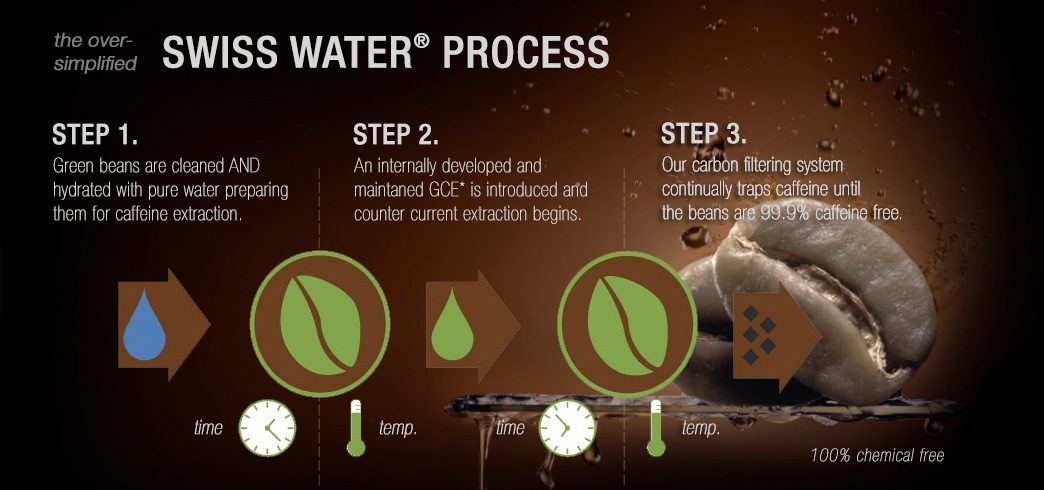
How is caffeine removed to produce decaffeinated coffee?
“First, some background. Coffee is the second most popular beverage in the world, after tea. Historians believed the use of coffee as a stimulant originated in ancient Abyssinia (Ethiopia). Caffeine is the component of coffee that is responsible for its mild stimulatory effect on the central nervous system. A six-ounce cup of coffee typically contains approximately 50 to 75 milligrams of caffeine, although the amount varies considerably depending on the method of preparation and the type of coffee; Robusta coffee contains nearly twice as much caffeine as Arabica, for instance. For people who are sensitive to caffeine, even 10 milligrams can cause discomfort. That is why nearly all decaffeinated coffees contain less than 10 milligrams of caffeine (typically two to five milligrams) per serving. Today decaffeinated coffee accounts for approximately 12 percent of total worldwide coffee consumption, or nearly 1 billion pounds per year.
Caffeine is a naturally occurring compound found in certain plants and crops –cocoa, tea and (of course) coffee. All coffee plants, and thus all coffee beans, contain naturally occurring caffeine. Thus, decaf coffee is actually a process, performed before roasting, by which the majority of the caffeine is removed.
Decaffeination processes use water or stream, as the caffeine molecules are water soluble. However, the process has to be quick and efficient enough to extract the caffeine, but also limit the loss of the flavor molecules.
Some processes have produced better tasting (i.e. less flavor loss) than others;
There are 4 main USDA approved methods for decaffeination: Methylene Chloride (Traditional), Activated Charcoal (Swiss Water), Super Critical Carbon Dioxide (CO2), and Ethyl Acetate (Natural).
- Methylene Chloride (“Traditional”) is the oldest and most common method. Likely 80-90% of all decaffeinated coffee is handled this way. This process, done in Germany, uses both water and MC to bond quickly with the caffeine molecule – thereby limiting the loss of flavor. This process consistently produces the best tasting decaffeinated coffees.
- Charcoal Filtration (“Swiss Water”) is the second most common type of decaffeination, accounts for about 10% of decaffeinated coffee, and is often used for Organic Coffee decaffeination. This process, done in Canada, uses flavor charged water and charcoal filtration to extract the caffeine molecules. This process is more expensive.

- Supercritical Carbon Dioxide (“CO2”) & Ethyl Acetate (“Natural”) are both used in limited capacities. CO2, done in the USA and elsewhere, and Ethyl Acetate, done mostly in Mexico, are often referred to as “Natural” processes because the elements are naturally occurring in the environment. However, the quantity and concentrations needed require synthetic or manufactured versions. These are relatively new decaffeination methods.
Important Fact: Decaffeination does not mean “caffeine-free”! The USDA requires coffee sold as “Decaf” to have at least 97% of the original caffeine content removed. Thus, “Decaf Coffee” can have up to 3% of its’ original caffeine content.
!!! Interesting Facts:
-High quality Arabica coffee has less caffeine then Robusta coffees
-Dark Roast coffees contain slightly less caffeine then lighter roasts. It’s only marginally less, so enjoy your favorite…light, dark or somewhere in between!
-Regional water differences can affect the caffeine extraction levels
-Caffeine extracted from decaffeinating coffee is often sold to other industries – i.e. soft drink, energy drink, pharmaceuticals, etc.
